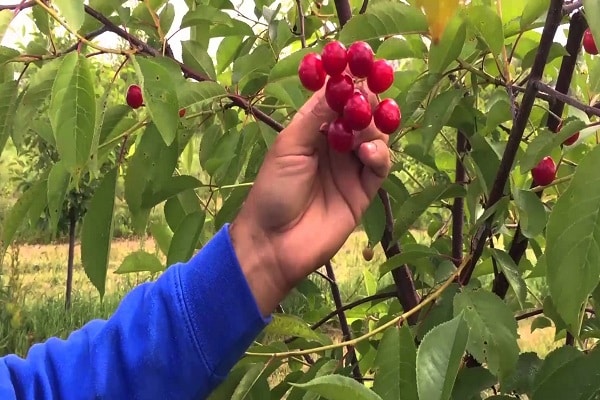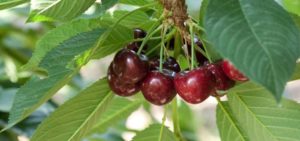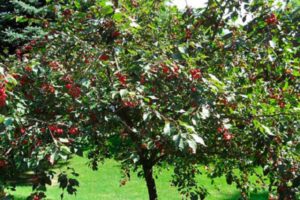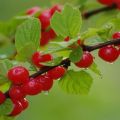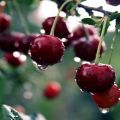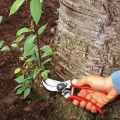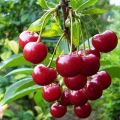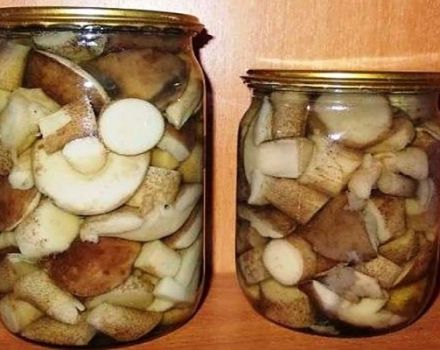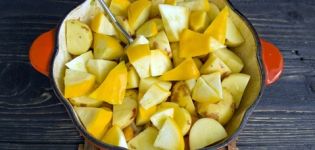Description and characteristics of the yield of the cherry variety Zhivitsa and cultivation features
For the first time, the Zhivitsa cherry variety was bred by Belarusian breeders. The hybrid was obtained by crossing the Spanish variety Griot Ostheimsky and Denisen yellow cherry.
Features of the variety
Zhivitsa is considered one of the most popular varieties in Russia. If you study the description of the variety, it becomes not difficult to understand why the hybrid is so fond of among gardeners.
The hybrid Zhivitsa belongs to frost-resistant varieties. Medium early fruiting. The tree begins to bear fruit in the last days of June - early July. The plant is not tall, it grows up to 2.5 m in height. The crown is compact, thickened with medium branches. Flowering begins in May. Zhivitsa is a fruitful variety; up to 150 kg of cherries are harvested from one adult tree.
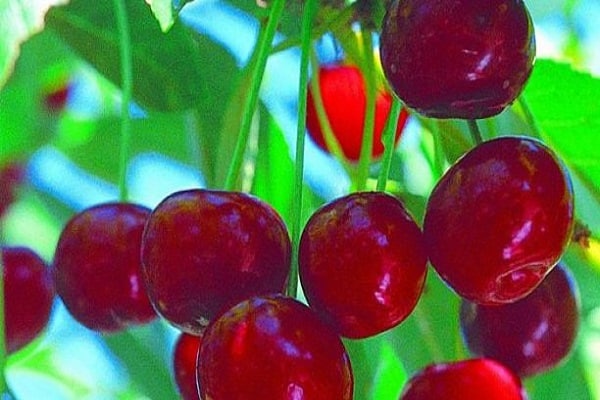
The fruits are oval in shape, the average weight is 3-4 g. The flesh is burgundy, the rind is rich red-scarlet. The taste of the fruit is sweet and sour.
Landing features
Before you start planting a seedling, you need to choose the right place for planting and follow all the rules for planting cherries. The entire yield of the tree depends on planting a young seedling.
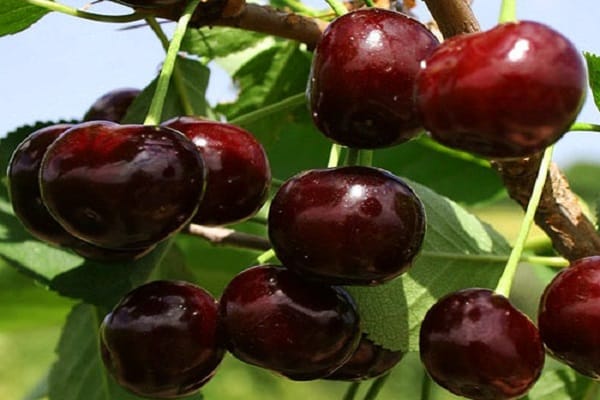
Seat selection
As a rule, it is recommended to plant seedlings near sheds or walls of houses. In winter, more snow accumulates in these places, and cherries are not afraid of frosts.
Choose open, sunny areas with little shading. It is not recommended to plant cherries in the shade. The southern slopes are most often considered favorable. Preference should be given to loamy or sandy loam soils. If you plant Zhivitsa on clayey dense soils, you will not have to wait for a good harvest. On such soil, the tree does not bear fruit well.
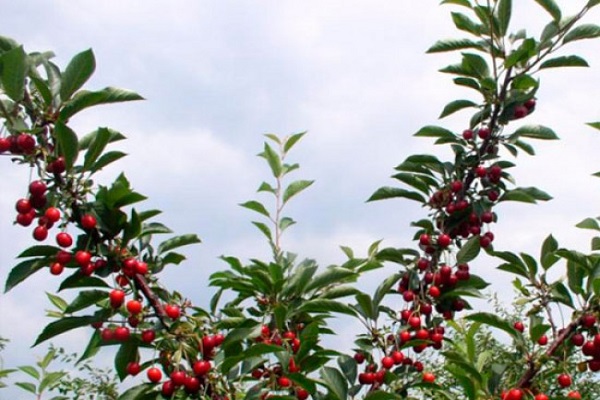
Since the Zhivitsa variety is self-fertile, other varieties of cherries are planted nearby. The best pollinating trees of Zhivitsa include:
- All varieties of cherries.
- Cherry Vianok.
- Seedling number 1.
In addition, bees are attracted to the garden to increase pollination.

Boarding time
You can plant a seedling twice a year - in spring and autumn. Each planting date has its own advantages and disadvantages. In the central latitudes, preference should be given to autumn planting. Saplings should be planted until mid-October. During this time, the cherry will have time to take root and survive the frost.
In the north, cherries are planted in the spring. Mid-to-late May is considered favorable. Over the summer, the tree will get stronger and will not freeze at the first frost.

Care features
The care includes:
- Watering.
- Fertilization.
- Pruning a tree.
- Loosening the soil.
Despite the fact that Zhivitsa belongs to unpretentious hybrids, she still needs minimal care.
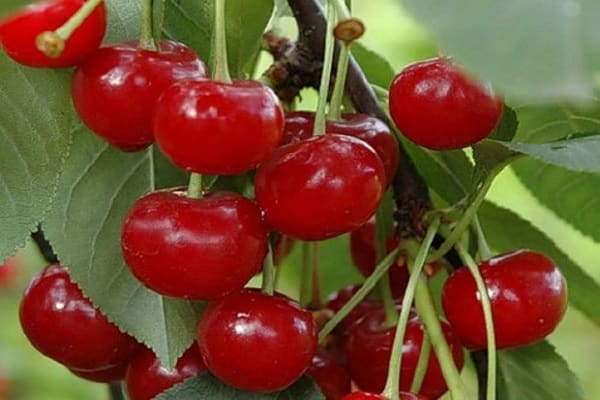
Watering
Trees are not watered often, no more than 5 times per season.Before each wetting, the soil is loosened. For one watering, no more than 7 buckets of water are poured into the soil.
Watering cherries:
- During the period of swelling of the kidneys.
- After flowering.
- During fruit formation.
- Before harvesting.
Trees are watered only with warm water. Excessive soil moisture and drying out of the earth must not be allowed.
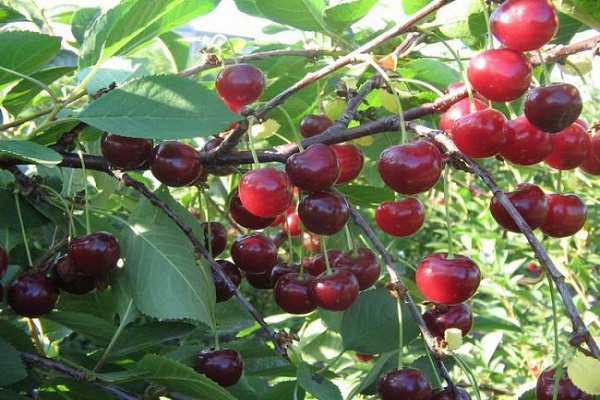
Top dressing
The first time fertilization is applied in the second year after planting the seedling. In the spring, nitrogen-containing fertilizing is applied to the soil to activate the growth of the buds. With the onset of flowering, phosphorus, potassium and nitrogen are added to the soil.
With the onset of fruiting, urea and nitrophosphate are introduced into the soil. In the fall, before the onset of cold weather, the soil is mulched with a thick layer of peat or humus. Once every 5 years, the earth is mixed with lime.
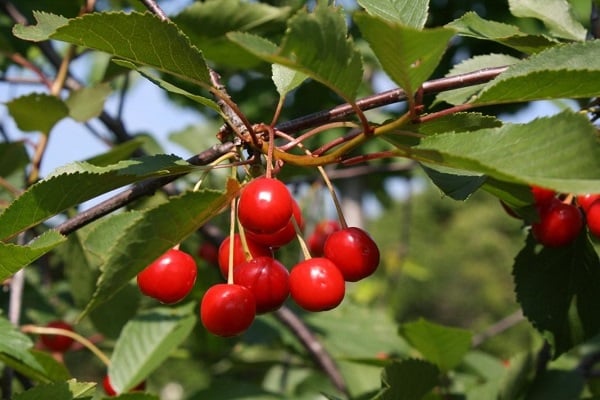
Pruning
An important point in care is pruning and crown formation. In the spring, part of the shoots and branches is cut off. 5-7 skeletal branches are left. In addition, the skeletal branches and the trunk themselves are thinned out. In the fall, dry, damaged branches are cut off and root shoots are cut off. The cut branches are burned away from the garden.
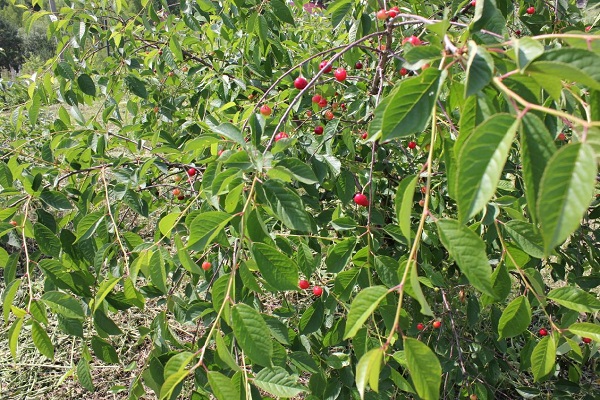
Diseases and pests
To prevent the appearance of diseases and parasites, cherries are examined several times per season. Most often, the tree is sick with clasterosporia, gray rot and anthracnose. For these diseases, trees are sprayed with Bordeaux liquid, copper sulfate or Nitrafen.
Among insects, cherry fly, mucous sawfly, aphid and weevil are distinguished. Cherries are treated with "Aktara" from the fly. The sawfly is destroyed with the Calypso. Fufanon helps with the weevil. Aphids are destroyed with Nitrafen. In addition, a decoction of onion peels helps.
